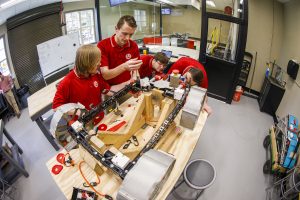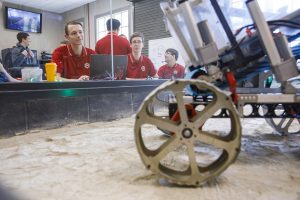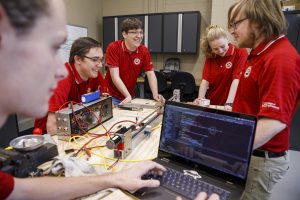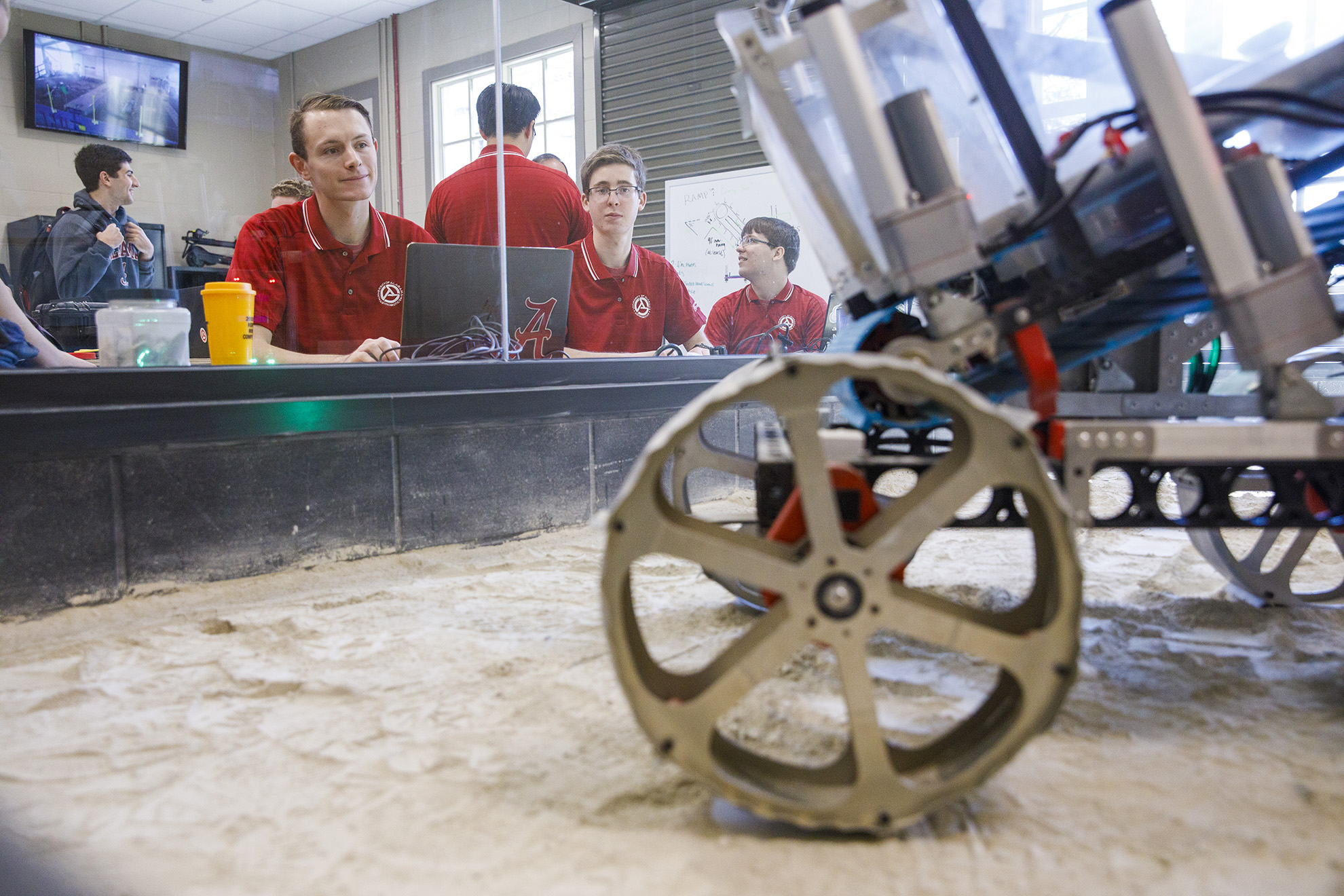
TUSCALOOSA, Ala. — The five-time NASA Robotic Mining Competition champions from The University of Alabama will take over hosting duties this year.
The Alabama Astrobotics team, titleholders in 2012, 2015, 2016, 2017 and 2018, will host the Robotic Mining Challenge May 6-10 on UA’s campus. For the past nine years, the competition has taken place at NASA’s Kennedy Space Center.
“I think it’s a really good opportunity for us to showcase what we can do,” said Dr. Ken Ricks, Alabama Astrobotics faculty adviser and a UA associate professor of electrical and computer engineering.
Twenty-eight teams have accepted the invitation to travel to UA from schools in North Dakota, Alaska, California, New York and around the country. The college students will descend on Tuscaloosa to demonstrate how a robot they built over the past year can autonomously navigate and excavate simulated Martian soil, or regolith.
Judges from past competitions will judge the UA event using NASA’s rules with only slight logistics tweaks made by main event sponsor Caterpillar Inc. Since UA has a team in the challenge, the University will have no part in the judging or rules.
Every team will get one 10-minute practice run and two competition runs. Practices runs will take place May 6-7 with the challenge starting May 8 and continuing through May 10.
Teams will be recognized at a banquet Friday evening with the Judge’s Innovation Award, the SSERVI Regolith Mechanics Award, first through sixth place Caterpillar Autonomy Awards and first through third place Mining Awards.

“We’re trying to make it as consistent with the Kennedy experience as we can,” Ricks said.
The student teams found themselves in unchartered territory just three months ago.
An announcement by NASA in mid-February stated the yearly mining competition was canceled. NASA was forced to relinquish its annual hosting duties because of lost preparation time during the government shutdown earlier this year. Event sponsors and participating schools scrambled to create a replacement event for the students who had worked hard to prepare this past year.
Representatives from Caterpillar reached to Ricks and asked if he could host the event in Alabama’s new state-of-the-art lab. Although hesitant to take the lead because he knew hosting would distract his team before competition, Ricks agreed it would be best for the students and the future of the event.
“We were all very concerned it would go away. So, to prevent it from going away, we are trying to bridge the gap … It’s what’s best for RMC, and it’s what’s best for the students,” Ricks said, adding the challenge will only be hosted at UA this year and is scheduled to return to NASA in 2020.
NASA will have a virtual competition this year with categories including systems engineering paper, outreach report and technical presentation. UA is hosting only the on-site mining challenge.

“NASA is doing everything that they would normally do except for the mining category. They’ve renamed it virtual because there’s not a real robot involved any longer,” Ricks said. “They’re going to award their national champion based on nothing but the technical documentation, outreach and that kind of thing. We are going to provide the teams an outlet to actually demonstrate their robots.”
“I’m trying to make sure my team stays focused so that we’re as prepared as we can be to meet these deadlines and put a robot in the pit that’s going to be a good product,” Ricks said. “It’s a balancing act, and we’re trying to do the best that we can to make both sides of this work.”
Organizers plan to stream the challenge live on YouTube. Monitors will be placed in the team work area in the basement of the North Engineering Research Center.
Contact
Alana Norris, engineering communications, 205/348-6444, anorris@eng.ua.edu
Source
Dr. Kenneth Ricks, kricks@eng.ua.edu
